
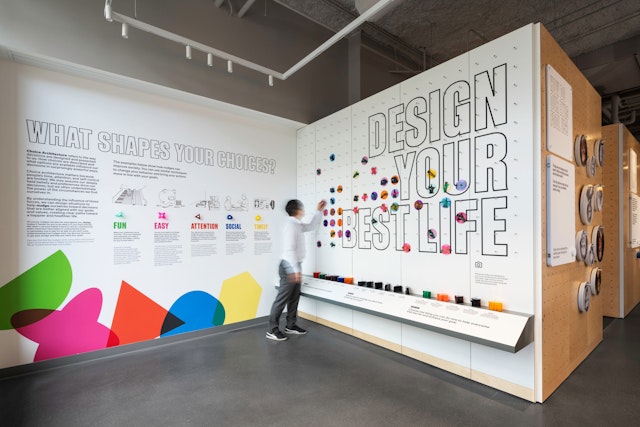
The space presents a one-of-a-kind experience where people can learn more about how their minds work, and at the same time, contribute to groundbreaking science as participants.







Working with CDR, the designers developed a series of exhibits that translate the principles of behavioral science into dynamic hands-on experiences that capture decision making in process.

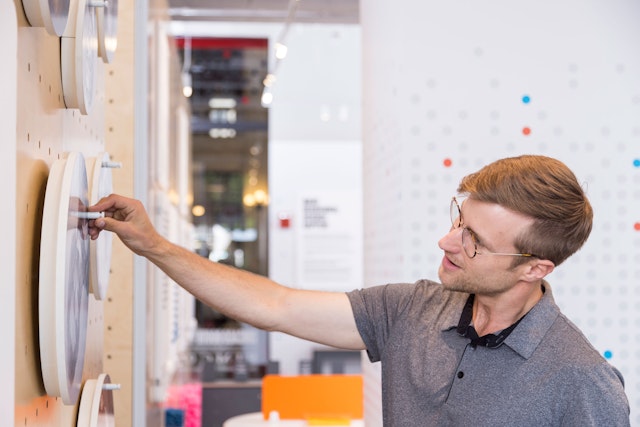
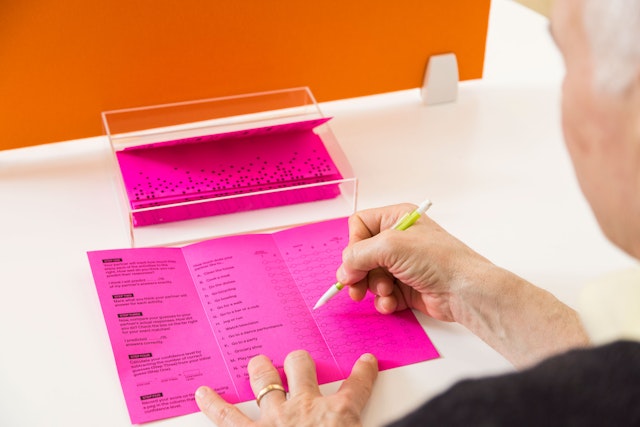
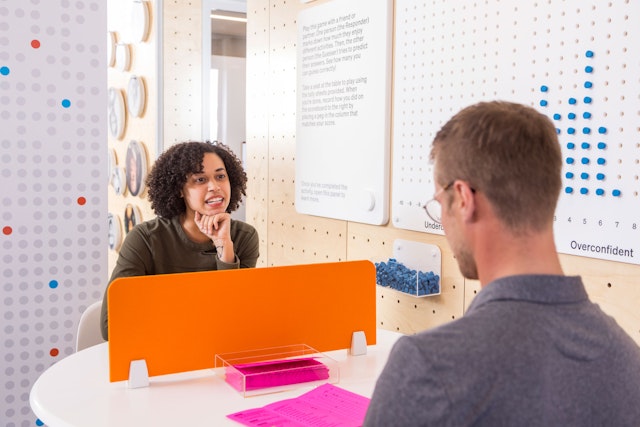


Built around the system of pegboard panels, the modular design suggests a lab or workshop and can be easily updated with new exhibits and information.
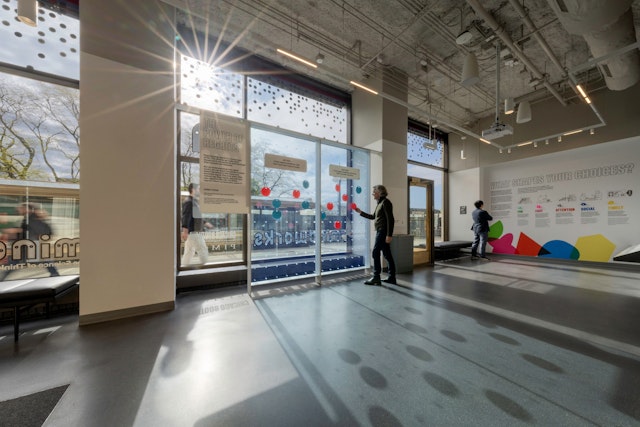
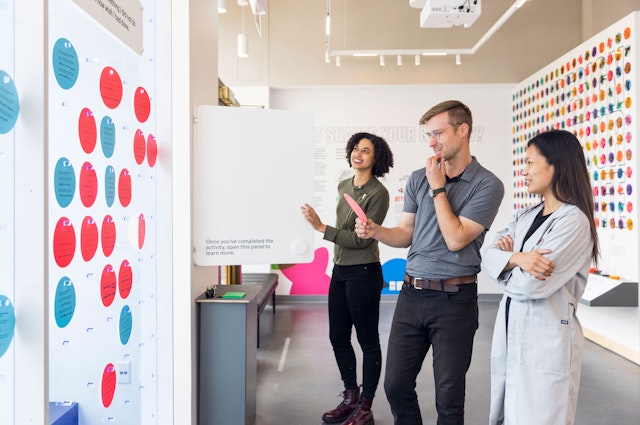
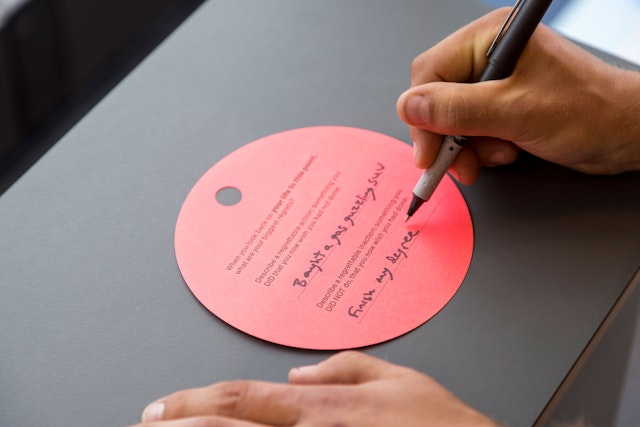
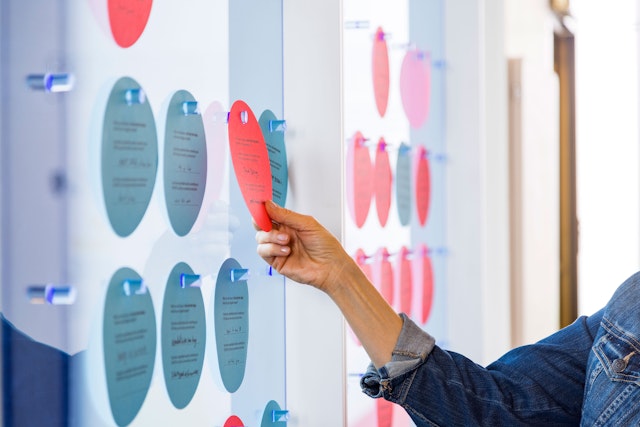
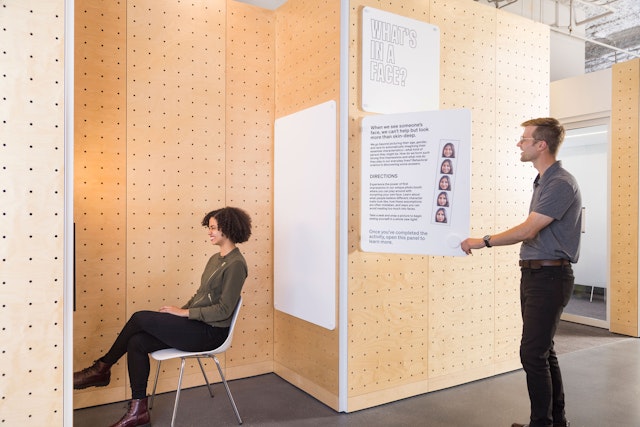
The experiments are fun and encourage a sense of play, but have scientific value for researchers as they collect data.
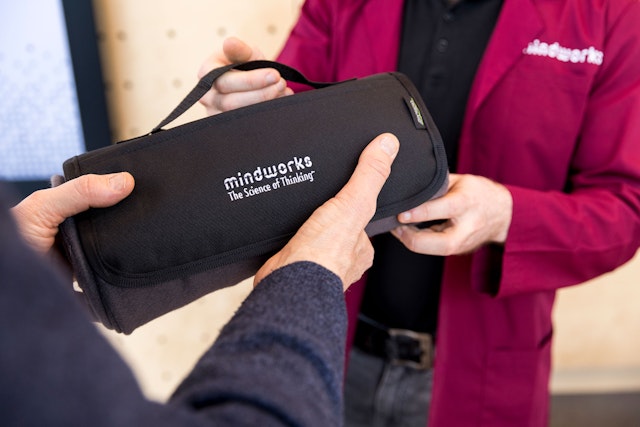

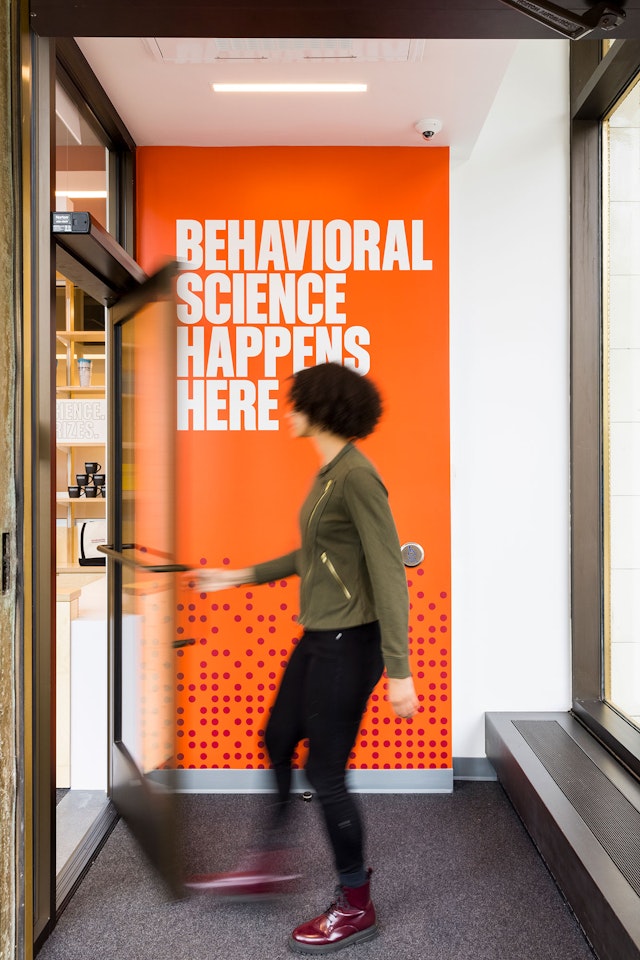
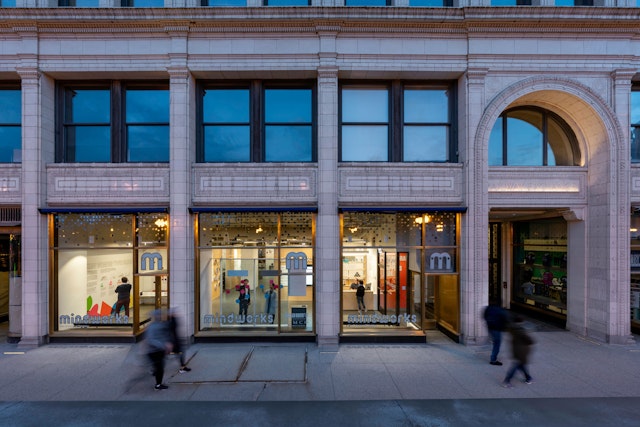
We may not always be aware of them, but countless individual decisions, judgments and choices guide and impact almost everything that happens in our daily lives. Behavioral science is the study of this decision making––the mental leaps that we all make, consciously or not, in situations that help shape our experiences.
Mindworks: The Science of Thinking is the world’s first discovery center and working lab dedicated to behavioral science. Presented by the Center for Decision Research (CDR) at the University of Chicago Booth School of Business, the space is a one-of-a-kind experience where people can learn more about how their minds work, and at the same time, contribute to groundbreaking science as participants. Pentagram has developed a fun and engaging experience design for Mindworks that immerses visitors in an interactive exhibit space that both introduces the concepts behind behavioral science and produces quality research.
Mindworks was conceived by faculty at the CDR and created by the CDR in partnership with Pentagram, the architectural firm KrueckSexton Partners, the University of Chicago Facilities Services, and Executive Construction, Inc. The space is free and open to the public and features eight interactive exhibits that allow visitors to explore, in a hands-on way, a range of ideas and discoveries in behavioral science and to experience firsthand how findings from research in the field can be applied to help them understand and improve their lives.
The project was developed in collaboration by three Pentagram partners: Giorgia Lupi and team created the experience design and interactive installations; Abbott Miller and team developed the exhibition design, display system and environmental graphics; and Luke Hayman and team designed the visual identity. The Pentagram designers worked closely with the CDR and KrueckSexton Partners to create a holistic environment that seamlessly combines the exhibits, research and data collection within one physical space.
Mindworks is housed in a high-profile storefront location in the historic Railway Exchange Building, an architectural landmark on Michigan Avenue in the heart of Chicago’s cultural corridor. The 2,500 square foot space encompasses both the interactive exhibition and PIMCO Decision Research Laboratories, a working lab that invites people to participate in academic research experiments designed by the scientists at the CDR. In 2018, PIMCO and the CDR announced a partnership in support of the Center’s behavioral science research, which included the opening of a new storefront space to foster greater engagement with the public and increase the diversity of participants in studies. Mindworks expects more than 20,000 visitors in its first year and will position itself as a unique and entertaining destination––a behavioral science lab where people can both study and be studied simultaneously.
Understanding how and why people make decisions has important applications in a range of contexts, including management, marketing, finance, and public policy––as demonstrated during the current public health crisis. The CDR is positioned at the forefront of the field, and Mindworks incorporates the research of Richard Thaler, the Charles R. Walgreen Distinguished Service Professor of Behavioral Science and Economics at Chicago Booth who coined the term “Nudges” and was the 2017 recipient of the Nobel Memorial Prize in Economic Sciences for his contributions to behavioral economics.
Working with CDR, Pentagram developed a series of exhibits that translate the principles of behavioral science into dynamic hands-on experiences that capture decision making in process. The designers conducted workshops with faculty and staff to find the focus for a variety of installations that would reflect and inform the ongoing research by CDR. The team helped develop the Mindworks name and identified moments within the flow of the exhibition for individual modules centered on specific behavioral science principles.
The challenge for the designers was integrating the exhibits within the context of a working lab with its own testing and interview rooms, which make up a majority of the space. The exhibition architecture by KrueckSexton Partners was conceived as a series of cubes in the open atrium of the Railway Exchange Building. The exhibition design uses the outer walls of these volumes as display surfaces. The functionality of the lab inspired a workshop aesthetic, with pegboard used as the basis for a modular display system. This “kit of parts” ties into the user experience, with the lo-fi look helping to make the complex concepts behind the experiments more accessible and tangible in a real-world context.
The Mindworks exhibits bring the principles of behavioral science to life in an engaging and meaningful way. Visitors are invited to participate in a series of interactive installations that explore the theories, concepts and factors behind the field through games, puzzles, infographics and other activities. The designers developed an infrastructure for asking questions that would result in valuable research data, and abstract concepts have been translated into physical data visualizations that help people learn through doing.
The experiments are fun and encourage a sense of play, but have scientific value for researchers as they collect data. The exhibits employ the principles of “data humanism”––using data to uncover the human stories behind the numbers and statistics, and to challenge the idea of data as something that is impersonal and intimidating. Built around the system of pegboard panels, the modular design can be easily updated with new exhibits and information.
The marquee exhibit is “Design Your Best Life,” an infographic mural explaining the ideas of Choice Architecture and Nudges. Visitors choose a colorful shape to answer each question, ultimately creating a layered data portrait that represents their goals and chosen techniques to remove any barriers from achieving them. The portrait is displayed on the wall alongside others leaving behind a data collection for researchers.
Another installation, “Are You a Risk Taker?,” asks visitors to consider how they would behave in imaginary scenarios that help illustrate Prospect Theory, a concept that explores the predictable errors that humans make because of the tendency to feel a loss more powerfully than an equal gain. Strings are used to mark responses in the pegboard to form a Prospect Theory matrix.
Other modules include “How Do Our Eyes Fool Us?,” with visual illusions that show how the mind takes shortcuts, and “What’s in a Face?,” which explores the power of first impressions in a unique photo booth that allows visitors to see their faces in a new way. The contemplative “Power of Regret” allows visitors to take a step back and reflect on the choices they’ve made and discover patterns in these decisions that may help them minimize regret.
The distinctive look extends to the visual identity Pentagram created for the exhibition. The Mindworks logo appears in modernist geometric typography that is dynamic and forward-looking while also being welcoming and approachable. The wordmark integrates a series of circles that echo the workshop design and hint at systems and data collection. The dots carry through to patterns in the environmental graphics.
The branding playfully honors UC Booth’s heritage as a rigorous academic institution while appealing to a broader audience. The graphics appear in the official school colors of maroon and gray, with a secondary palette of bright and bold colors. Typography is set in the contemporary grotesk Söhne (from Klim Type Foundry).
Sector
- Education
- Arts & Culture
Discipline
- Brand Identity
- Exhibitions
- Data Driven Experiences
Office
- New York
Partners
Project team
- Kirsty Gundry
- Lindsey Petersen
- Michelle Brown
- Ting Fang Cheng
- Sarah Kay Miller
- Phillip Cox
- Shigeto Akiyama
- Janny Ji
- Katie Lovins
Collaborators
- KrueckSexton Partners, architects
- Executive Construction, Inc., fabricators
